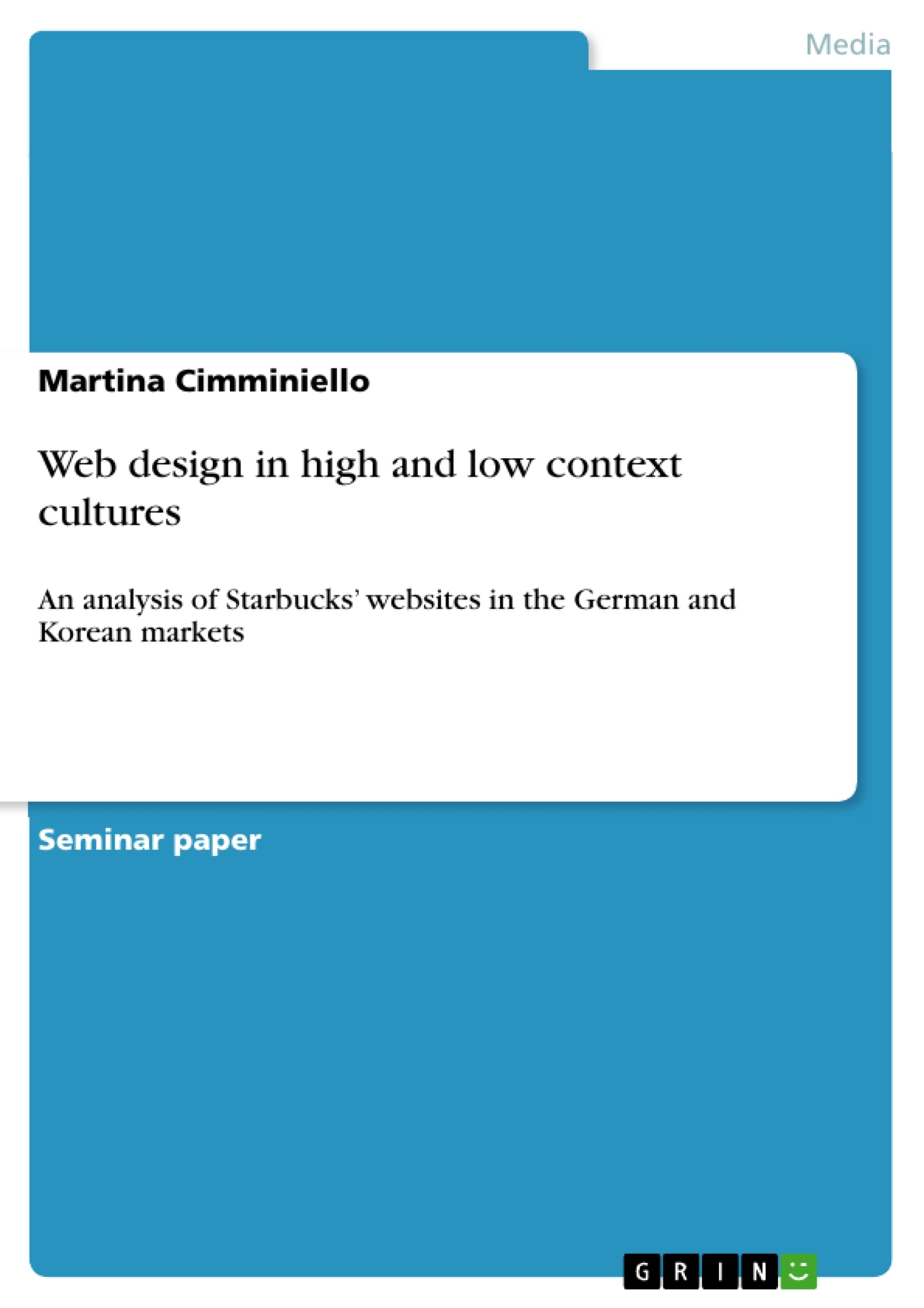The focus in this paper shall lie on the business’ website. When planning a website, the development process includes the research and analysis of the target group in order to catch their attention. Colors and symbols for instance are relevant for many cultures and need to be taken into account when designing a website. Due to the increasing globalization of markets, websites have to be adapted to the customer’s needs. Therefore, an investigation on cultural preferences is needed. Based on the study of the IT University of Copenhagen of 2005, this paper aims to answer the question of whether the company Starbucks is adapting its websites to the cultures of their international markets. Furthermore, it shall examine what the main differences of the websites are. Before that, the contexting theory by Edward T. Hall will be explained, followed by an outline on intercultural web design. The analyzed low context country will be Germany, whereas the high context country will be South Korea. As a conclusion, this paper will summarize the findings and give an outlook on the future of Hall’s theory.
Inhaltsverzeichnis (Table of Contents)
- 1 Introduction
- 2 Intercultural communication approach by Edward Hall
- 2.1 High context cultures
- 2.2 Low context cultures
- 3 Cross-cultural communication in digital marketing
- 3.1 Particularities in intercultural marketing
- 3.2 Cultural adaptions in web design
- 4 Analysis of Starbucks' websites of high and low context countries
- 4.1 Low context example: Germany
- 4.2 High context example: South Korea
- 4.3 Comparison and results
- 5 Conclusion
Zielsetzung und Themenschwerpunkte (Objectives and Key Themes)
This paper investigates the question of whether the company Starbucks adapts its websites to the cultures of their international markets. It examines the main differences between the websites of Starbucks in Germany (a low context country) and South Korea (a high context country) based on Edward T. Hall's contexting theory. The analysis aims to contribute to the understanding of intercultural web design principles and their application in global marketing.
- The application of Edward T. Hall's contexting theory to website design.
- The influence of cultural context on web design elements, such as language, imagery, and overall website structure.
- The analysis of Starbucks' websites in Germany and South Korea as examples of low and high context cultures.
- The identification of key differences in design elements and user experience between the two websites.
- The implications of cultural adaptations in web design for global marketing strategies.
Zusammenfassung der Kapitel (Chapter Summaries)
- Chapter 1: Introduction
This chapter introduces the concept of high and low context cultures as defined by Edward T. Hall, highlighting the importance of considering cultural factors in international marketing. It emphasizes the need for cultural adaptations in web design to effectively target diverse audiences.
- Chapter 2: Intercultural communication approach by Edward Hall
This chapter explains Edward T. Hall's contexting theory, which distinguishes between high and low context cultures. It provides examples of countries classified as high or low context and discusses the role of context in communication.
- Chapter 3: Cross-cultural communication in digital marketing
This chapter explores the challenges and opportunities of cross-cultural communication in digital marketing. It emphasizes the importance of cultural sensitivity and adaptions in web design to ensure effective communication with diverse target audiences.
- Chapter 4: Analysis of Starbucks' websites of high and low context countries
This chapter analyzes the websites of Starbucks in Germany (low context) and South Korea (high context) to identify key design differences and their relationship to the cultural context of each country. It compares and contrasts elements such as language, imagery, and website structure.
Schlüsselwörter (Keywords)
This paper focuses on the key topics of intercultural communication, high and low context cultures, web design, cultural adaptions, digital marketing, global marketing strategies, and the analysis of Starbucks' websites in Germany and South Korea.
- Quote paper
- Martina Cimminiello (Author), 2020, Web design in high and low context cultures, Munich, GRIN Verlag, https://www.grin.com/document/989794



